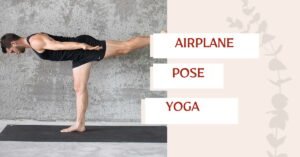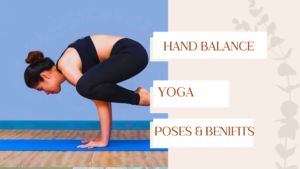Introduction to Intermediate Yoga Poses
Welcome to the next stage of your yoga journey with aatmyogashala: intermediate yoga poses. As you progress beyond the basics, intermediate yoga poses offer a way to deepen your practice, challenge your limits, and refine your technique.
This level of practice is crucial for building strength, improving flexibility, and enhancing mental focus. Intermediate yoga bridges the gap between beginner and advanced levels, providing a solid foundation for further growth.
Benefits of Intermediate Yoga Poses
Intermediate yoga poses bring a multitude of benefits to both the body and the mind. Here’s how:
- Strength Enhancement: These poses require engagement of multiple muscle groups, building overall strength and endurance.
- Flexibility Improvement: Intermediate poses push your flexibility to new heights, helping to increase your range of motion.
- Mental Focus and Clarity: Holding more complex poses requires concentration and mindfulness, boosting mental resilience.
- Balance and Coordination: With increased complexity, intermediate poses challenge your balance and coordination, promoting better body awareness.
Exploring Intermediate Poses
Below, we’ll explore a curated list of 8 intermediate yoga poses, each designed to elevate your practice.
1. Warrior III (Virabhadrasana III)
!Warrior III
- Instructions:
- Begin in Warrior I.
- Inhale, shift weight onto the front foot.
- Exhale, hinge forward at the hips while lifting the back leg.
- Stretch arms forward, keeping the body in a straight line.
- Alignment: Ensure your hips are square and parallel to the floor.
- Breathing: Maintain steady, even breaths.
- Modifications: Use blocks under hands for support.
- Benefits: Strengthens legs, core, and improves balance.
- Contraindications: Avoid if you have hip or ankle issues.
- Role in Practice: Enhances balance and stability.
2. Crow Pose (Bakasana)
!Crow Pose
- Instructions:
- Squat, place hands shoulder-width apart on the mat.
- Bend elbows and lift hips.
- Place knees on the upper arms.
- Shift weight forward and lift feet off the ground.
- Alignment: Keep gaze forward to maintain balance.
- Breathing: Steady breathing helps maintain pose.
- Modifications: Practice lifting one foot at a time.
- Benefits: Strengthens arms, wrists, and core.
- Contraindications: Avoid if you have wrist or shoulder injuries.
- Role in Practice: Builds arm strength and confidence in arm balances.
3. Half Moon Pose (Ardha Chandrasana)
!Half Moon Pose
- Instructions:
- Start in Warrior II.
- Place hand on the floor or a block in front of the front foot.
- Lift back leg parallel to the floor.
- Stretch the top arm towards the ceiling, stacking the hips.
- Alignment: Keep the lifted leg and body in a straight line.
- Breathing: Deep, steady breaths.
- Modifications: Use a wall for support.
- Benefits: Enhances balance, strengthens legs and core.
- Contraindications: Avoid if you have hip or lower back issues.
- Role in Practice: Improves balance and hip mobility.
4. Camel Pose (Ustrasana)
!Camel Pose
- Instructions:
- Kneel with knees hip-width apart.
- Place hands on lower back.
- Inhale, lift chest and arch back.
- Reach hands to heels, deepening the backbend.
- Alignment: Keep hips over knees, avoid collapsing low back.
- Breathing: Deep breaths to open the chest.
- Modifications: Use blocks next to feet for hands.
- Benefits: Opens chest, improves spine flexibility, stimulates digestion.
- Contraindications: Avoid if you have neck or lower back issues.
- Role in Practice: Enhances flexibility and opens heart chakra.
5. Dolphin Pose (Ardha Pincha Mayurasana)
!Dolphin Pose
- Instructions:
- Start in Downward Facing Dog.
- Lower forearms to the mat.
- Keep hips raised and walk feet closer to elbows.
- Alignment: Ensure shoulders are aligned with elbows.
- Breathing: Steady, deep breaths.
- Modifications: Use a strap around upper arms for support.
- Benefits: Strengthens shoulders, arms, and core.
- Contraindications: Avoid if you have shoulder or neck injuries.
- Role in Practice: Prepares for more advanced inversions.
6. Revolved Triangle Pose (Parivrtta Trikonasana)
!Revolved Triangle Pose
- Instructions:
- Start in Triangle Pose.
- Rotate torso and place opposite hand on the floor or block.
- Extend top arm towards the ceiling.
- Alignment: Keep hips squared and spine elongated.
- Breathing: Deep, controlled breaths.
- Modifications: Use a block under the lower hand.
- Benefits: Stretches legs, hips, and spine; improves balance.
- Contraindications: Avoid if you have spinal or hip issues.
- Role in Practice: Enhances flexibility and spinal mobility.
7. King Pigeon Pose (Eka Pada Rajakapotasana)
!King Pigeon Pose
- Instructions:
- Start in Pigeon Pose.
- Bend the back knee and reach the hand back to grasp the foot.
- Lift the chest and arch the back, bringing the foot closer to the head.
- Alignment: Keep hips squared and avoid tilting forward.
- Breathing: Deep breaths to open the chest and hips.
- Modifications: Use a strap to reach the foot.
- Benefits: Deeply stretches the hips and quads; opens the chest.
- Contraindications: Avoid if you have knee or lower back issues.
- Role in Practice: Enhances flexibility and opens heart chakra.
8. Side Plank Pose (Vasisthasana)
!Side Plank Pose
- Instructions:
- Start in Plank Pose.
- Rotate onto the side, stacking feet and extending top arm towards the ceiling.
- Hold the pose, engaging the core and maintaining balance.
- Alignment: Keep body in a straight line from head to heels.
- Breathing: Steady, controlled breaths.
- Modifications: Lower the bottom knee for support.
- Benefits: Strengthens arms, core, and legs; improves balance.
- Contraindications: Avoid if you have wrist or shoulder injuries.
- Role in Practice: Builds core strength and stability.
Safety Tips for Practicing Intermediate Yoga
Transitioning to intermediate yoga poses requires mindful practice to avoid injuries and ensure a safe experience. Here are some important tips:
- Warm-Up Thoroughly: Ensure your body is properly warmed up before attempting intermediate poses to prevent strains and injuries.
- Listen to Your Body: Pay attention to your body’s signals and avoid pushing beyond your limits.
- Use Props: Blocks, straps, and blankets can help you achieve proper alignment and support.
- Practice Mindfully: Focus on your breath and stay present in each pose to enhance safety and effectiveness.
- Seek Guidance: Whenever possible, practice under the guidance of a qualified yoga instructor who can provide personalized adjustments and feedback.
Progressing in Yoga
To continue advancing your yoga practice, consider the following strategies:
- Consistent Practice: Regular practice is key to improvement. Aim to practice at least three to four times a week.
- Set Goals: Identify specific goals for your yoga practice and work towards them incrementally.
- Expand Your Repertoire: Continuously introduce new poses and variations to keep your practice dynamic and challenging.
- Attend Workshops: Participate in yoga workshops or retreats to deepen your knowledge and skills.
- Reflect and Adapt: Regularly assess your progress and make necessary adjustments to your practice routine.
Conclusion: Intermediate yoga poses
Intermediate yoga poses offer an exciting opportunity to challenge yourself and deepen your practice. Embrace the journey with patience, dedication, and mindfulness. As you explore these poses, remember that progress comes with consistent practice and a positive mindset. Each pose is a step toward personal growth and a deeper connection with your body and mind.
Ready to take your practice to the next level? Embrace the challenge of intermediate yoga and experience the transformative benefits it brings. Namaste.
(FAQs) Intermediate yoga poses
1. How often should I practice intermediate yoga poses?
Consistency is key to improvement. Aim to practice at least three to four times a week to build strength, flexibility, and confidence in intermediate poses. This regularity helps your body adapt to new challenges and ensures steady progress.
2. What if I can’t do a pose perfectly?
It’s important to remember that yoga is a journey, not a destination. If you can’t perform a pose perfectly, use modifications and props to help you achieve the correct alignment. Focus on gradual improvement rather than perfection, and be patient with yourself.
3. How can I safely advance to more difficult poses?
To safely advance to more difficult poses, ensure you are consistently practicing foundational poses and gradually introducing new challenges. Warm up thoroughly, listen to your body, and seek guidance from a qualified yoga instructor. Incorporating props and modifications can also provide the support you need to progress safely.
4. Can I practice intermediate yoga poses at home?
Yes, you can practice intermediate yoga at home as long as you are mindful of your body’s limits and maintain proper alignment in each pose. Make sure you have a quiet, comfortable space free of distractions. It’s also beneficial to follow video tutorials or online classes to guide your practice.
5. What are the benefits of practicing intermediate yoga poses?
Practicing intermediate yoga poses can significantly enhance your overall strength, flexibility, and balance. These poses challenge your body and mind, fostering a deeper connection with both. Additionally, intermediate yoga can improve posture, reduce stress, and increase body awareness, leading to a well-rounded, holistic sense of well-being.




